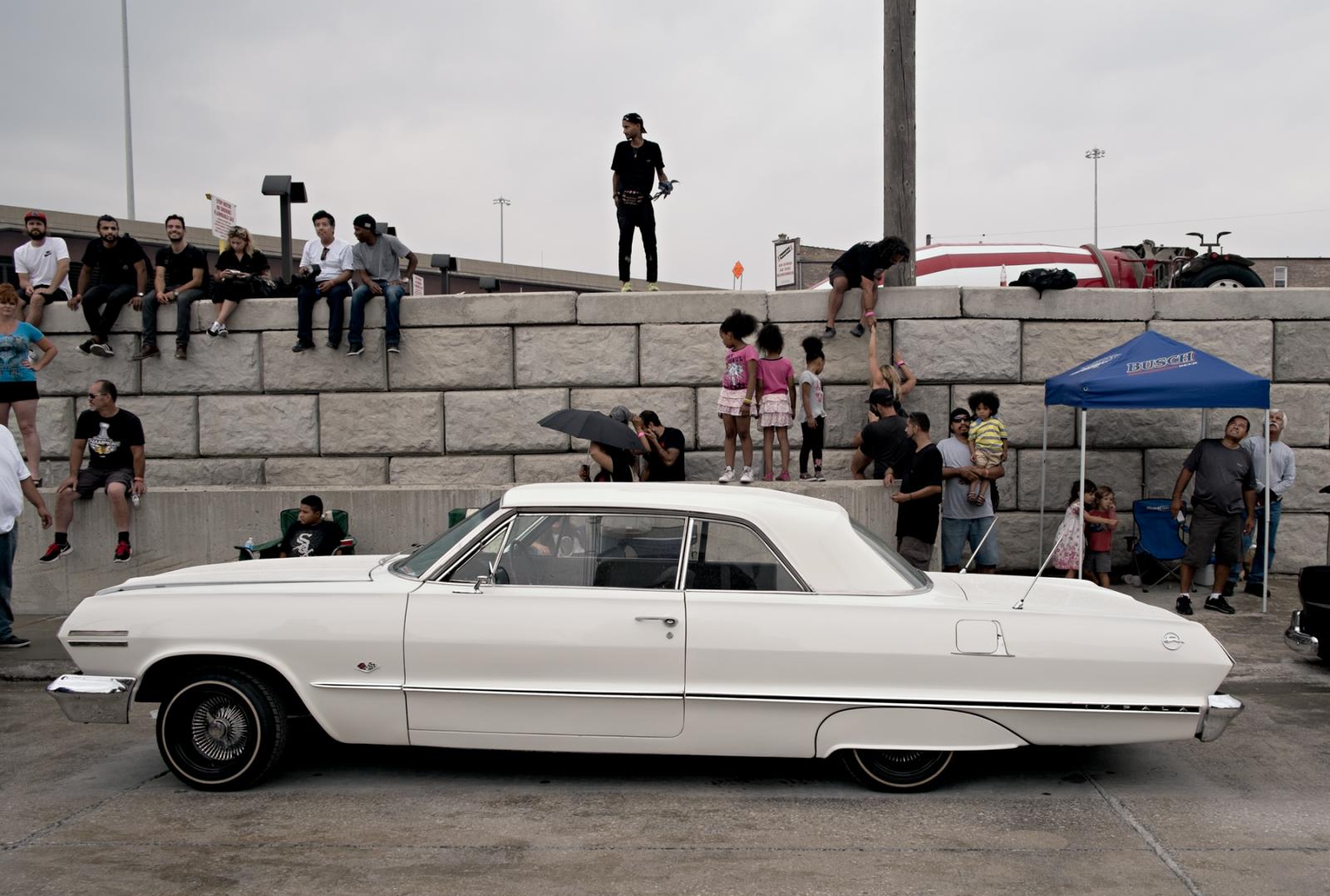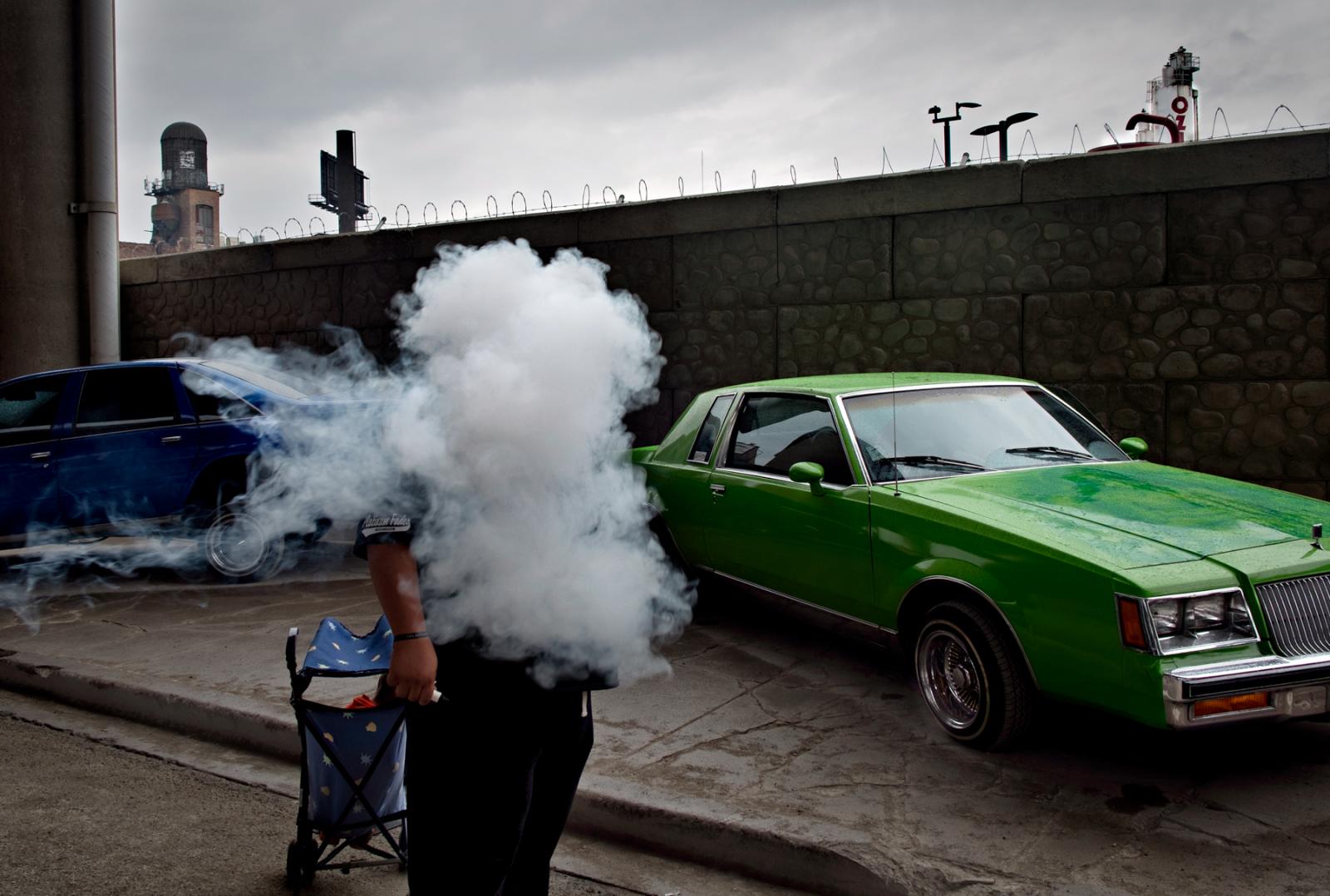Text by Hector Luis Alamo
Lowrider culture began in the desert somewhere. Whether it started in the actual desert shared by El Paso, Texas and New Mexico, or whether it emerged from the socioeconomic desert along Whittier Boulevard, that's still up for debate.
The pachucos were the first to lower their rides, though no one really knows where the pachucos came from either. Some say El Paso, as the town was known as "El Chuco" and people headed there were said to be going "pa' El Chuco." Others claim pachuco is just a corruption of the word pocho, which is what Mexicans call their Americanized cousins north of the Rio Grande. No longer Mexicans but not accepted in the American mainstream either, the pachucos wore the baggy pants and long coats popular among their black and Italian counterparts. It was the pachucos who were the main targets of the so-called Zoot Suit Riots in June 1943.
In the beginning they put sandbags in their trunks. These weren't the 1974 Monte Carlos or even the 1964 Impalas that we associate with lowriding today. The cars pachucos drove had the rounded classic look that was out of style with the well-to-do mainstream which wanted its cars to look more like something from Mars.
As time passed and new generations of Mexican Americans adapted pachuco culture, the elegant cars of the 1940s and 50s gave way to the big, boxy boats on wheels of the 1960s and 70s. Eventually the pachuco disappeared altogether, and in his place appeared a new breed of Mexican Americans looking to add to and distinguish themselves from American culture: the chicanos. Gone were the zoot suits, but chicanos were just as identifiable as their pachuco forebears had been. They were the ones marching in the streets demanding rights and yelling "Sí se puede!" Chicanos spoke of something called "la Raza" and "brown power."
As in any other major city in the United States, the chicanos and blacks of Los Angeles lived close enough to each other that their cultures borrowed from one another. By the time West Coast gangsta rap took off in the late Eighties, lowriding was as much a part of Compton's culture as N.W.A.'s music was a part of the culture of East Los. Music videos gave the rest of America the impression that lowrider culture was mostly a black thing " and not only that, but a part of the "thug life" described by gangsta rappers.
Lowriders had always received a bad wrap, of course. Anything young people do is always considered dangerous and subversive by the grown-ups in charge. Unfortunately, lowriding and gangsta rap comes out of the same, neglected communities plagued by poverty and crime. Once gangsta rappers featured lowriding in their videos alongside liquor, weed and guns, it only confirmed what most of the detractors of lowrider culture had been saying for decades.
Yet through its history there have been enthusiasts working to preserve lowriding as an important artifact of the larger Latino culture. Car clubs have sprung up in places such as Chicago " with names like South Side Cruisers, Amistad and Con Estilow " imposing strict codes of conduct on their members.
"There are a whole lot of lowriders who are preoccupied with being a positive presence in their community," Ben Chappell, author of Lowrider Space: Aesthetics and Politics of Mexican American Custom Cars, said in a 2012 interview with Vice. "The club that I spent the most time with had strict rules: no drinking or drugs, no gang activity. When you were representing the club in public, that was a serious responsibility."
In the same vein, for the past five years the Chicago Urban Art Society has hosted the Slow&Low: Community Lowrider Festival in the city's Pilsen neighborhood. This year's event featured not only beautifully customized cars but also food, music and art in a celebration of lowrider culture.
By paying homage to such a time-honored tradition in Latino culture, events like the Slow&Low festival tap into something cherished within the Latino mindset. These cars are a part of the living history of the Latino community, just as Latinos themselves are physical reminders of their own past.
So when we see a 1972 Cutlass Supreme rolling down the block and watch as the driver hits the switches to make it bounce, we recall the chicanos who came before us and the pachucos who came before them. We remember those who taught us how a car should be driven " bajito y suavecito.
Hector Luis Alamo is a contributing editor for Latino Rebels and Gozamos, and an opinion columnist for the Chicago Tribune's RedEye.




































